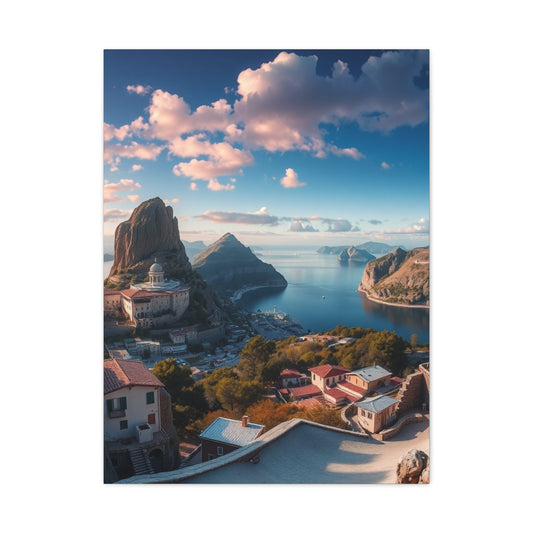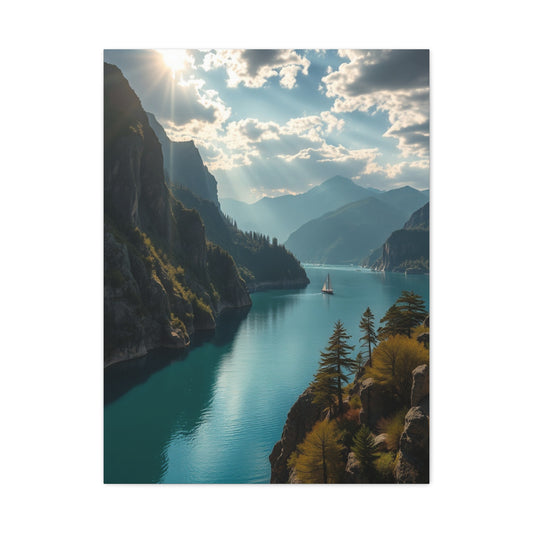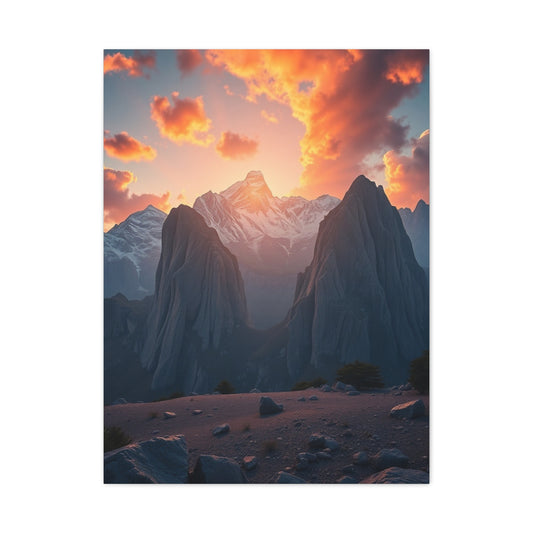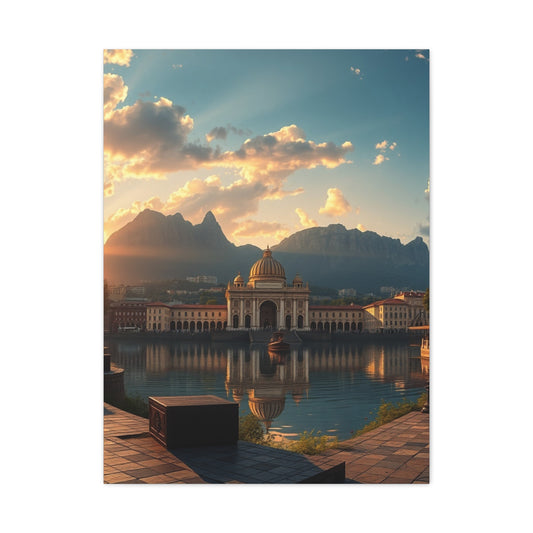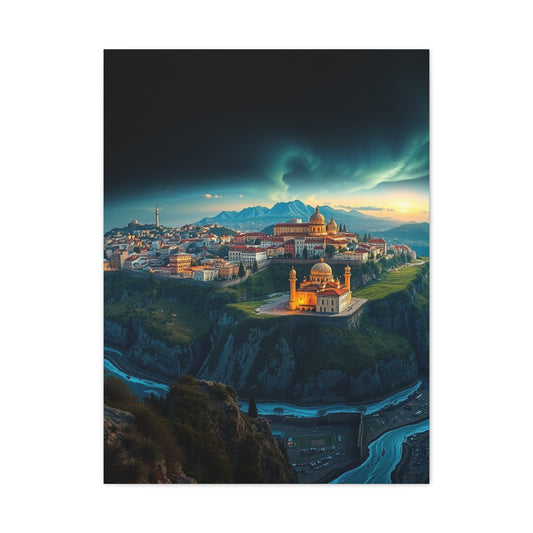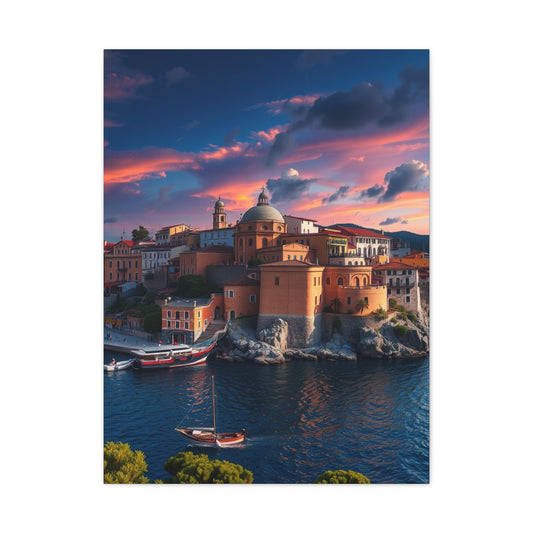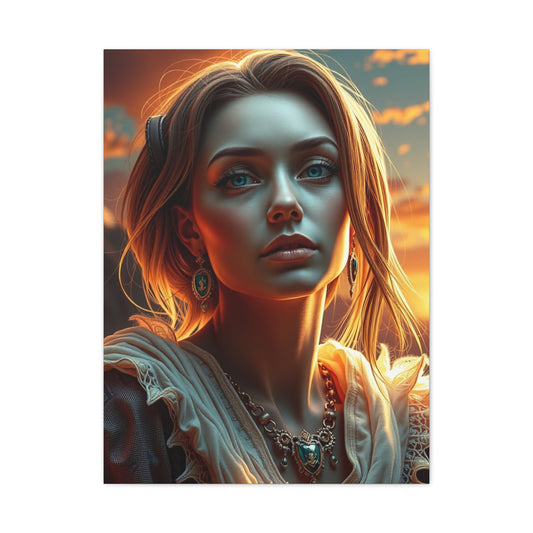Stunning Panoramic Wall Art for Modern Interiors
Panoramic wall art offers an immersive way to transform ordinary walls into extraordinary visual statements. Unlike traditional square or rectangular artworks, panoramic wall prints emphasize length and proportion, creating a dynamic perspective that instantly draws the eye. A carefully chosen panoramic canvas print can act as the centerpiece of a room, infusing it with rhythm, balance, and atmosphere. This form of art does not merely decorate; it expands and enhances the perception of space, giving walls a new dimension of depth and vitality. Whether horizontal or vertical, panoramic wall art adapts fluidly to interiors, bringing both boldness and refinement.
Background
The concept of panoramic representation has long roots in the history of visual expression. Originally developed as sweeping depictions of landscapes and cityscapes, panoramic compositions aimed to capture more than the eye could perceive at a single glance. They emerged in the nineteenth century with large painted scenes and evolved with photography into extended views of horizons, skylines, and vast terrains. In contemporary design, panoramic wall art carries forward that tradition of expansiveness while adapting to the diverse needs of modern interiors. Homeowners, curators, and designers now use panoramic wall prints not only for landscapes but also for abstract art, architectural studies, and even minimalistic motifs. This versatility is what gives panoramic canvas prints their enduring popularity. Their elongated format aligns naturally with modern architectural lines and open-plan layouts, making them relevant for both residential and professional settings.
Key Concepts
Panoramic wall art revolves around the idea of proportion, scale, and perspective. Unlike compact artwork that may serve as a subtle accent, panoramic wall prints act as commanding elements that anchor a space. The concept of orientation is central: horizontal panoramic art and vertical panoramic art offer entirely different atmospheres. While one conveys width and flow, the other emphasizes height and elegance. Materials such as stretched canvas, fine art paper, or textured finishes further shape how these works interact with light and space. In interior design, panoramic wall art functions not just as decoration but also as a tool to guide the observer’s gaze, harmonize architectural features, and convey personal taste. When integrated thoughtfully, it can unify furniture placement, color palettes, and spatial rhythm in ways that smaller works cannot achieve.
Horizontal Panoramic Art
Horizontal panoramic wall art is the quintessential choice for wide expanses, such as the area above a sofa, bed, or dining table. Its stretched proportions echo the horizon itself, bringing a sense of calm continuity and visual stability. In open-plan living rooms, horizontal panoramic art provides cohesion by drawing together disparate elements—sofa arrangements, dining areas, and adjoining spaces—into a unified composition. The flowing line of a wide panoramic canvas print mirrors natural sightlines, making it particularly effective in guiding attention across the room. Coastal views, mountain ranges, desert dunes, and urban skylines are popular subjects, but abstract designs with sweeping curves or layered textures can be equally impactful. The scale of horizontal panoramic wall art means it acts as more than just ornamentation; it becomes a dominant presence, one that shapes how a room is experienced both spatially and emotionally.
Vertical Panoramic Art
Vertical panoramic canvas prints are often overlooked yet incredibly effective in transforming narrow, awkward spaces. They bring a sense of elevation, elongating walls and making ceilings appear taller. When placed between windows, along staircases, or in entryways, vertical panoramic wall art provides balance and sophistication. Its linear composition can highlight architectural features, such as tall windows or vaulted spaces, while filling gaps that otherwise feel bare. Vertical panoramic prints also create an aura of refinement when used symmetrically, such as placing two identical or complementary artworks on either side of a bed or a fireplace. Subjects like cascading waterfalls, tall architectural structures, abstract line compositions, or botanical themes are especially striking in vertical formats. These works enhance rhythm in confined areas, transforming them into engaging design moments rather than transitional voids.
Panoramic Wall Prints
Panoramic wall prints encompass a wide array of subjects and artistic techniques, each capable of shaping a room’s personality. Photography-based panoramic wall art captures sweeping natural landscapes, bustling cityscapes, or serene seascapes with meticulous detail. Artistic interpretations, such as impressionist brushstrokes or digital abstractions, reinterpret panoramic dimensions into something imaginative and expressive. Materials and printing techniques further influence the aesthetic. Canvas provides warmth and texture, while glossy finishes emphasize vibrancy. Matte prints, on the other hand, bring a quiet elegance that resists glare and blends seamlessly with minimalist settings. Panoramic wall prints also come in various sizes, allowing for single statement pieces or multi-panel arrangements that span across a wall like a visual journey. When thoughtfully curated, they not only enhance décor but also invite viewers to step into a scene that extends beyond the physical boundary of the wall.
Where to Use Panoramic Wall Art
Panoramic wall art adapts with remarkable ease across different interiors, making it one of the most versatile décor options available. In living rooms, wide panoramas hung above sofas or entertainment centers balance proportions and add an eye-catching dimension. Bedrooms benefit from vertical panoramic canvas prints on either side of the bed or a single piece above the headboard, harmonizing with the symmetry of the space. Hallways and staircases, often neglected areas, find purpose when adorned with elongated vertical prints or horizontal compositions that guide the movement of the observer along the passage. In home offices, panoramic wall art fosters an inspiring environment, whether through energizing abstract pieces or calming nature-inspired prints. Dining rooms, too, flourish under the influence of panoramic art, as horizontal canvases can stretch across the dining table, creating a hospitable and elegant atmosphere. Even bathrooms, when styled with waterproof panoramic wall prints, can transform into serene retreats with imagery of oceans, forests, or minimalistic line art.
Finding the Perfect Piece
The journey of selecting the right panoramic wall art is as much about intuition as it is about design principles. One must consider the scale of the wall, the orientation of the artwork, the color palette of the room, and the desired atmosphere. Serene landscapes can calm and ground a room, while bold geometric abstracts inject energy and personality. Vintage-inspired panoramic prints add a sense of nostalgia, while contemporary digital compositions evoke sophistication and modern flair. Size is critical; a panoramic canvas that is too small may be lost in a large wall, whereas one that is appropriately proportioned becomes a striking centerpiece. Materials also matter—stretched canvas adds tactile richness, framed prints offer definition, and unframed options create a seamless, floating effect. Lighting further enhances the impact, with natural or directional light emphasizing textures and details. Ultimately, the perfect panoramic wall art resonates with the individual’s aesthetic while harmonizing with the room’s architectural rhythm.
Panoramic Wall Art in Contemporary Design
Modern interiors increasingly lean toward clean lines, open spaces, and minimal clutter. Panoramic wall art fits seamlessly into this ethos, serving as a singular bold feature without overwhelming the space. Its elongated proportions complement contemporary furniture, echoing the sleekness of sofas, credenzas, and dining tables. In industrial lofts, panoramic canvas prints with urban motifs or architectural details enhance the raw character of exposed brick and metal surfaces. In minimalist homes, abstract panoramic wall art with muted tones reinforces tranquility. Panoramic pieces can also act as conversation starters in eclectic spaces, where diverse styles meet harmoniously under the influence of a commanding artwork. The adaptability of panoramic wall prints ensures they remain timeless investments that grow with evolving décor trends.
The Emotional Dimension of Panoramic Wall Art
Beyond aesthetics, panoramic wall art has a profound emotional effect. Expansive landscapes evoke serenity, while vibrant abstracts inspire creativity and dynamism. Cityscapes instill a sense of wanderlust and energy, while vintage panoramic prints conjure memory and nostalgia. The wide or tall proportions amplify these emotions, immersing viewers in the experience. In shared spaces, panoramic wall art encourages dialogue, as guests are drawn to its commanding presence. In personal rooms, it serves as a daily reminder of values, aspirations, or cherished places. The connection forged between observer and artwork transforms a wall into a source of inspiration and reflection, enriching the environment on a deeper, more intimate level.
Importance and Benefits of Panoramic Wall Art
The importance of panoramic wall art lies in its remarkable capacity to reshape and redefine the atmosphere of an interior. Unlike conventional pieces that may accentuate a corner or fill a modest space, panoramic wall prints command attention by dominating expanses of wall with a harmonious sweep of imagery. This alone alters how a room is perceived, enlarging its visual field and injecting a sense of grandeur. In living spaces where scale and balance are crucial, panoramic wall art ensures that no wall appears empty or insignificant. It anchors furniture arrangements, reinforces symmetry, and provides a natural focal point.
The benefits of panoramic canvas prints extend beyond aesthetics. They introduce rhythm and dynamism into a room, echoing architectural lines and drawing the gaze along their length or height. For smaller spaces, vertical panoramic wall art provides a sense of expansion, lifting the eye and making ceilings appear taller. In open-plan layouts, wide horizontal pieces establish cohesion by linking separate zones together visually, ensuring that the flow of space feels continuous.
Psychologically, panoramic wall art cultivates mood and emotion. Serene natural panoramas can instill tranquility, while abstract panoramas filled with vibrant tones spark energy and conversation. Artistic wall prints serve as daily reminders of aspiration, inspiration, or cherished memories, transforming interiors into reflections of personal identity. Moreover, panoramic wall art adapts across diverse décor styles, from rustic cottages to modern lofts, embodying versatility that enhances both residential and commercial environments.
Another understated benefit lies in durability and timelessness. Panoramic canvas prints, when crafted with high-quality materials, resist fading and retain vibrancy for years. This endurance ensures that investment in panoramic wall art is more than decorative—it is a contribution to the long-term character and refinement of a space.
Evolution of Wall Art Styles
The history of wall art traces a fascinating evolution, from the earliest cave paintings to the expansive panoramic compositions seen today. In prehistoric times, walls were canvases of survival and storytelling. Ancient societies adorned their dwellings with symbolic images, reflecting rituals, myths, and daily life. As civilizations flourished, wall art grew increasingly ornate, manifesting in murals, frescoes, and tapestries that carried religious and cultural narratives.
The Renaissance period elevated wall art into a sophisticated form of grandeur. Panoramic frescoes painted on cathedral walls and palace ceilings not only depicted sacred tales but also showcased the technical mastery of perspective and proportion. These sweeping works were early embodiments of panoramic wall art, designed to immerse observers and convey grandeur. The Baroque era pushed the boundaries further, emphasizing dramatic scale, intricate detail, and emotional intensity in wall decoration.
With the advent of photography and industrial printing, wall art entered a new era of accessibility. Panoramic wall prints became attainable, no longer confined to palaces and cathedrals. Expansive cityscapes, wide horizons, and architectural marvels could be reproduced and displayed in homes, democratizing the luxury once exclusive to elites. By the twentieth century, abstraction and minimalism introduced new languages for wall art. Panoramic canvas prints with geometric motifs or abstract textures became as significant as traditional landscapes, shifting the purpose from pure representation to emotional and conceptual resonance.
Today, panoramic wall art embodies the fusion of historical traditions with modern innovation. Digital techniques allow infinite possibilities in design, from high-definition photography to algorithmic art. Yet the fundamental purpose remains unchanged: to transform walls into portals of imagination, storytelling, and beauty. The progression of styles shows how wall art has remained a timeless medium for self-expression, continually reinventing itself while preserving its role as the soul of an interior.
Techniques Used in Wall Art
Techniques employed in panoramic wall art span centuries of artistic exploration, blending classical craftsmanship with contemporary innovation. Each method carries distinct qualities that influence the aesthetic and emotional impact of the final piece.
Hand-painting remains one of the oldest and most revered approaches. Panoramic murals executed with brush and pigment continue to command admiration for their authenticity and tactile depth. Whether frescoes, oils, or acrylics, hand-painted panoramic wall art brings individuality, as each stroke conveys the artist’s rhythm and emotion. These works offer a richness that mass reproduction cannot fully capture, making them cherished for their uniqueness.
Photography introduced new horizons to panoramic wall art. With the invention of panoramic lenses and digital stitching techniques, photographers can now capture sweeping vistas, architectural marvels, and dynamic urban life with astonishing detail. Printed on canvas or fine paper, these images recreate reality with immersive precision. Advances in printing technology allow photographers to transform wide images into panoramic wall prints that retain vibrancy, texture, and clarity, bringing nature, culture, or urban vibrancy into interiors.
Mixed media has become increasingly popular in contemporary wall art. Artists experiment with layering paint, photography, textiles, or even metallic accents to achieve depth and texture. A panoramic canvas print executed with mixed media can appear both modern and timeless, offering tactile intrigue that shifts with light and perspective.
Digital art has revolutionized panoramic design, allowing artists to employ software for creating expansive compositions impossible through traditional means. Techniques like vector illustration, digital collage, and fractal rendering have expanded the lexicon of wall art. Printed on canvas, metal, or acrylic, digital panoramic works bring a futuristic sensibility, appealing to audiences who appreciate innovation and sleek modernity.
Reproduction techniques also matter. Giclée printing, for example, is prized for its high resolution and archival quality, ensuring panoramic wall prints maintain vibrancy for decades. Screen printing and lithography remain valued for their distinct textures, where each print carries subtle variations that enhance individuality.
The technique of presentation also plays a role. A panoramic canvas stretched over a frame offers a seamless, floating effect that emphasizes scale, while framed panoramic wall art provides structured definition suited to classical or eclectic settings. Multi-panel arrangements, where a panoramic image is divided into separate canvases, add rhythm and dimension, turning walls into dynamic installations rather than static displays.
Through these diverse techniques, panoramic wall art adapts to countless design preferences. Whether hand-painted with expressive brushstrokes, digitally generated with meticulous precision, or composed through layered mixed media, the possibilities remain inexhaustible. Each method enriches the language of wall art, ensuring that every piece not only decorates but also communicates a deeper narrative woven into the fabric of the space it inhabits.
Step-by-Step Guide to Choosing Wall Art
Selecting the right wall art requires thoughtful reflection, a sense of proportion, and an awareness of how art interacts with space. A carefully chosen panoramic canvas print or panoramic wall art piece can elevate a room from ordinary to extraordinary, but the process of selection benefits from a structured approach.
The first step is to evaluate the environment where the wall art will be displayed. Consider the size of the wall, the height of the ceiling, and the arrangement of furniture. A large, bare wall calls for an expansive panoramic wall print that provides balance and scale, while a narrow surface between windows may be more suited to a vertical panoramic canvas print that draws the eye upward.
The second step is to determine the purpose of the artwork. Some pieces are intended to act as focal points that immediately capture attention, while others serve a subtler role of blending with the décor. A horizontal panoramic wall art piece above a sofa or dining table becomes the centerpiece of the room, guiding the observer’s gaze and anchoring the design. On the other hand, a more understated panoramic canvas print with gentle tones can create a calm atmosphere without overwhelming the space.
The third step involves aligning wall art with the room’s color palette and mood. A panoramic wall print should harmonize with existing hues while either complementing or contrasting them deliberately. For neutral interiors, bold abstract panoramas may inject vibrancy, whereas colorful rooms often benefit from more muted or monochromatic panoramic art that avoids competing with other elements. Mood is equally important; landscapes bring serenity, geometric forms add energy, and vintage panoramic prints evoke nostalgia.
The fourth step requires attention to size and proportion. Choosing panoramic wall art that is too small for a vast wall can make the artwork seem insignificant, while an oversized print in a modest space can feel overwhelming. As a general principle, wall art should occupy a balanced portion of the wall, leaving room for breathing space but still asserting presence. Panoramic formats naturally help with proportion, as their elongated lines mirror architectural dimensions, creating harmony between structure and decoration.
The fifth step is about orientation. Horizontal panoramic canvas prints emphasize width and continuity, making them ideal for living rooms, dining rooms, or long hallways. Vertical panoramic wall art emphasizes height and sophistication, suitable for entryways, staircases, or narrow alcoves. Understanding the orientation ensures the artwork enhances rather than disrupts spatial balance.
The sixth step considers the subject and theme. Panoramic wall prints can depict natural landscapes, abstract designs, urban skylines, botanical motifs, or minimalist textures. Each theme conveys a unique character to the space. For example, a coastal panorama evokes tranquility and expansiveness, while a cityscape conveys vibrancy and modernity. Abstract panoramic art provides interpretive openness, inviting viewers to find their own meaning.
The seventh step addresses materials and finish. Panoramic canvas prints offer texture and warmth, giving an authentic feel that blends with both modern and traditional interiors. Acrylic or metal panoramic wall art provides sharpness and contemporary flair, suitable for sleek urban spaces. Matte finishes reduce glare and suit minimalist settings, while glossy surfaces enhance color intensity and attract the eye.
The final step is placement and lighting. Properly positioning panoramic wall art ensures it harmonizes with furniture and architectural lines. Centering above sofas, aligning with dining tables, or balancing headboards gives the artwork prominence. Lighting enhances detail and atmosphere, whether through natural sunlight, overhead fixtures, or directional spotlights that highlight texture and color. A panoramic wall print illuminated with care becomes more than decoration; it becomes a living element of the room.
By following these steps, the process of choosing wall art becomes a thoughtful journey rather than a hurried decision. It ensures that each panoramic canvas print not only fills a space but also enriches it with depth, narrative, and emotion.
Solutions for Integrating Wall Art Seamlessly
Integrating panoramic wall art into interiors requires more than simply hanging a canvas on an empty wall. True integration transforms the relationship between art, architecture, and atmosphere, creating unity that feels intentional and harmonious. Several solutions can help achieve this seamless effect, turning panoramic wall prints into enduring components of interior design.
One effective solution is to use wall art as a unifying thread in open-plan spaces. Modern homes often blend living, dining, and kitchen areas without clear divisions. A horizontal panoramic wall print placed strategically can act as a visual anchor, linking these zones together. By reflecting tones found in furniture or accessories, the panoramic canvas print provides cohesion and prevents the space from feeling fragmented.
Another solution is to embrace symmetry. When panoramic wall art is placed above a bed, sofa, or console table, it can create balance and proportion in the room. Vertical panoramic canvas prints on either side of a central feature add refinement, reinforcing the geometry of the space. Symmetry not only pleases the eye but also enhances a sense of calm and order.
For awkward or overlooked spaces, panoramic wall art offers innovative solutions. Staircases often suffer from blandness, but vertical panoramic wall prints along the ascent transform them into galleries of motion. Narrow hallways can feel more engaging with elongated panoramas that guide the eye forward. Even small alcoves become significant when adorned with well-chosen panoramic canvas prints, proving that every surface has potential.
Color integration provides another vital solution. A panoramic wall print that echoes accent colors from cushions, rugs, or curtains ensures cohesion. This technique prevents the artwork from appearing detached and instead weaves it into the design narrative. In contrast, deliberately selecting panoramic wall art in unexpected tones can provide a striking contrast, energizing the room with boldness. Both approaches are valid, depending on the desired atmosphere.
Layering is another sophisticated solution. Instead of allowing panoramic canvas prints to stand alone, designers may pair them with complementary décor. Shelves, lighting fixtures, or sculptural elements around the wall art can frame it and enhance its presence. Layering creates depth and dialogue, as the artwork interacts with its surroundings rather than remaining isolated.
Functional integration also provides value. Panoramic wall art can serve as a backdrop for functional areas without losing its aesthetic role. For example, a wide panoramic canvas placed above a dining table not only decorates but also establishes ambiance during meals. In workspaces, panoramic wall prints of landscapes or abstract designs create inspiration and reduce monotony. By merging function with beauty, wall art becomes essential rather than optional.
Another innovative solution lies in the use of scale and repetition. A single large panoramic canvas print can dominate a room, but multiple smaller panoramic wall prints arranged in sequence can create rhythm. Diptychs or triptychs, where a panoramic image is divided across several panels, add dynamism and interaction, encouraging the observer’s eye to travel across the entire composition.
Lighting again plays a pivotal role in integration. Solutions range from subtle ambient light to focused gallery-style illumination. A panoramic wall print under directional lighting reveals hidden textures, while natural sunlight accentuates depth and color shifts throughout the day. Lighting ensures the artwork adapts to different moods and times, extending its versatility.
Finally, personalization is perhaps the most meaningful solution. Custom panoramic wall art allows homeowners to immortalize personal photographs, cherished travels, or abstract designs tailored to their taste. This ensures the artwork resonates deeply, creating not just decoration but identity. Personalized panoramic canvas prints transform walls into narratives unique to the people who inhabit the space.
Through these solutions, panoramic wall art becomes seamlessly embedded into the environment. It shapes the way spaces are perceived, felt, and remembered. Whether through balance, cohesion, or personalization, these strategies ensure that wall art is never an afterthought but a vital element of design that enriches both atmosphere and experience.
Future Outlook of Panoramic Wall Art
The future of wall art is inseparably tied to cultural change, technological advancement, and evolving design philosophies. Panoramic wall art, with its elongated proportions and commanding presence, will continue to occupy a central role in interior design, but the forms it will take are likely to expand in unexpected ways. As architecture grows more experimental and living spaces adopt fluid boundaries between work, leisure, and creativity, panoramic canvas prints will adapt with equal fluidity.
One of the most significant developments shaping the future of wall art is the integration of digital technology. Already, panoramic wall prints have benefited from high-definition photography, advanced printing methods, and durable materials. Yet the horizon is broader. Digital screens embedded seamlessly into walls will allow homeowners to shift panoramic images at will, turning a serene seascape into an urban skyline with a touch. Such dynamic panoramic wall art will not be confined to one mood or subject, but instead will evolve with time, season, and emotion. The permanence of printed canvases will coexist with this new realm of flexibility, offering both traditional and interactive experiences.
Sustainability will also shape the outlook of panoramic wall art. As societies become more aware of ecological responsibility, demand will rise for panoramic canvas prints produced with environmentally conscious methods. Recycled materials, plant-based inks, and sustainable frames will ensure that the beauty of wall art does not come at the expense of the environment. Panoramic wall prints crafted with green technologies will gain prominence, allowing individuals to decorate their spaces without compromising ecological integrity.
Another emerging trend lies in personalization. Already, panoramic canvas prints allow individuals to immortalize their travels, experiences, or visions. Future techniques will refine this possibility, enabling custom panoramic wall art that integrates biometric data, personal memories, or AI-assisted interpretations of individual tastes. Each wall print will thus become a deeply intimate artifact, unique to its owner and resonating with their personal story. This sense of singularity will redefine the value of panoramic wall art, shifting it from mass-produced decoration to personal expression.
The role of panoramic wall art in commercial spaces will also expand. Offices, hotels, galleries, and public institutions will increasingly use large-scale panoramic wall prints to communicate identity and atmosphere. A corporate office may display abstract panoramic art that conveys innovation, while a hotel lobby may feature wide panoramic canvas prints of natural landscapes to instill calmness in visitors. As competition among businesses grows, wall art will become an instrument of branding as well as beauty.
Cultural exchange will continue to influence the aesthetics of panoramic wall art. Globalization allows motifs, textures, and inspirations from diverse traditions to merge in unexpected ways. A panoramic wall print may blend Japanese minimalism with Moroccan ornament, or combine Scandinavian simplicity with African vibrancy. This hybridization reflects the interconnected world, where art speaks across boundaries and resonates universally.
Technological artistry, such as augmented reality, will also leave its imprint. Panoramic wall art may extend beyond the physical surface, with augmented layers accessible through smart devices. Observers may point their phone at a panoramic canvas print and see an animation unfold or additional layers of imagery revealed. This fusion of tangible and digital dimensions opens a new frontier, where wall art becomes immersive and participatory.
Finally, the emotional role of panoramic wall art will deepen in a world where people increasingly seek refuge from complexity and turbulence. Homes will remain sanctuaries, and panoramic wall prints will provide grounding, calm, and inspiration. Expansive seascapes, lush forests, and abstract horizons will serve as reminders of balance, continuity, and imagination. In this sense, the future of wall art is not only aesthetic but also therapeutic, supporting human well-being by transforming interiors into spaces of serenity and meaning.
Wall Art in Public and Commercial Spaces
Panoramic wall art has steadily moved beyond the domestic sphere into the heart of public and commercial environments, transforming ordinary structures into visual experiences that embody character and purpose. In hotels, panoramic wall prints are often placed in lobbies or long corridors, guiding visitors through spaces with imagery that creates continuity and coherence. A seascape stretching across a reception wall immediately generates calmness, while bold abstract panoramic canvas prints in dining areas infuse vibrancy and energy into social settings. The presence of panoramic wall art in these contexts is not mere decoration but a silent ambassador of the institution’s identity.
In corporate spaces, wall art has become an extension of branding. Businesses recognize that the environment in which employees and clients interact contributes directly to perception and productivity. Panoramic wall prints of skylines, futuristic abstractions, or tranquil landscapes often dominate conference rooms, creating an atmosphere that conveys ambition, creativity, or stability. The choice of panoramic canvas prints becomes strategic, communicating values without words and anchoring the ethos of the organization in visual form.
Educational and cultural institutions also embrace panoramic wall art to enhance engagement and inspire reflection. Universities display large-scale panoramic wall prints of historical figures, scientific imagery, or symbolic landscapes to inspire curiosity and reinforce academic spirit. Museums and galleries adopt panoramic art installations that envelop visitors in thematic worlds, merging narrative and environment. Even libraries increasingly incorporate panoramic wall art that encourages serenity and focus, supporting the contemplative rhythm of reading and research.
Public spaces such as airports, hospitals, and transportation hubs benefit profoundly from panoramic wall art. In transit areas, panoramic wall prints guide movement, reduce anxiety, and provide a sense of orientation within large and often overwhelming spaces. Hospitals, with their inherent tension and emotional weight, utilize panoramic canvas prints of forests, rivers, or skies to provide comfort to patients and visitors. These carefully selected artworks transform sterile walls into sources of hope, reminding individuals of beauty and continuity beyond the confines of medical environments.
The commercial viability of panoramic wall art also cannot be understated. Restaurants, cafés, and retail stores adopt panoramic wall prints to create atmospheres aligned with their offerings. A café serving artisanal coffee may feature panoramic wall art of lush plantations, while a boutique clothing store may favor abstract panoramic prints that suggest elegance and style. In these contexts, panoramic wall art does more than beautify; it subtly influences consumer behavior, extending the brand narrative into the visual environment.
The expansion of panoramic wall art in public and commercial settings underscores its versatility. Whether it conveys serenity, excitement, or prestige, wall art has become a silent yet potent language that speaks to all who enter the space, leaving impressions long after they depart.
Therapeutic Dimensions of Panoramic Art
The therapeutic value of panoramic wall art represents one of its most profound contributions to human environments. Beyond its visual allure, panoramic art plays a role in psychological restoration, offering solace in spaces where stress, fatigue, and emotional burdens often dominate. Studies in environmental psychology consistently reveal the restorative effects of natural imagery on human well-being, and panoramic wall prints of horizons, waterscapes, and verdant forests serve as accessible conduits for these benefits.
In healthcare environments, panoramic canvas prints are increasingly recognized as tools of healing design. The presence of wall art in patient rooms, waiting areas, and recovery wards provides more than distraction; it creates a sense of reassurance and normalcy. A panoramic wall print of a distant mountain range can instill resilience, while flowing river imagery can evoke continuity and renewal. For patients undergoing long treatments, such art becomes a silent companion, fostering mental strength and reducing perceptions of pain or isolation.
Workplace wellness initiatives also integrate panoramic wall art as a means of reducing stress and promoting focus. In offices burdened by deadlines and constant digital engagement, panoramic wall prints of open skies or tranquil seas act as visual breathing spaces. Employees exposed to such imagery often report improved concentration, reduced anxiety, and greater satisfaction with their environment. In this way, wall art not only enhances aesthetics but actively contributes to workplace well-being.
In therapeutic practices themselves, panoramic wall art has found a unique role. Counseling rooms, yoga studios, and meditation spaces often incorporate panoramic canvas prints that reflect harmony and expansiveness. The gentle rhythm of horizontal panoramas fosters calmness, while vertical panoramas encourage a sense of elevation and growth. This subtle interplay between proportion and psychology demonstrates the profound way in which panoramic wall art interacts with the human mind.
Homes, too, benefit from the restorative dimensions of panoramic wall art. Bedrooms adorned with serene panoramic wall prints cultivate restful atmospheres, while living rooms with expansive landscapes or abstract flows create spaces of gathering and balance. For individuals seeking respite from the relentless pace of modern life, these visual anchors transform interiors into sanctuaries, reinforcing the home’s role as a place of healing.
The therapeutic potential of panoramic art is not limited to tranquility alone. Bold, dynamic panoramic wall prints can also inspire vitality and motivation. For those recovering from setbacks or pursuing personal growth, vibrant wall art becomes an emblem of strength and energy. This duality — calming when needed, energizing when desired — exemplifies the adaptability of panoramic wall art as a therapeutic medium.
Ultimately, the therapeutic dimension ensures that panoramic wall art transcends aesthetics to touch the realm of human resilience. It is not merely about beautifying spaces but about nurturing the human spirit within them, proving that art on the wall can quietly become art of the soul.
Conclusion
Panoramic wall art has always been more than mere embellishment. It is a language of scale, proportion, and emotion that communicates directly with the human spirit. Over the centuries, wall art has evolved from ancient frescoes and monumental murals into contemporary panoramic canvas prints that grace homes, offices, and public spaces alike. Its journey reveals not just changes in artistic style but also shifts in culture, technology, and human aspiration.
The significance of panoramic wall art lies in its ability to transform walls into dynamic storytellers. Horizontal panoramic wall prints convey flow, continuity, and cohesion, while vertical panoramas emphasize elevation, elegance, and rhythm. Each orientation offers unique possibilities, whether balancing wide living rooms, elongating staircases, or adding refinement to entryways. Beyond their visual power, panoramic canvas prints shape mood, evoke memory, and connect individuals with landscapes, abstractions, or visions that resonate personally.
Techniques used in creating wall art have also enriched its meaning. From brush-painted murals to digital compositions, from photography to mixed media, panoramic wall prints embrace both tradition and innovation. Each method contributes depth, character, and intrigue, ensuring that no two pieces are ever experienced in the same way. Materials and finishes further expand the spectrum, from tactile canvases to sleek acrylics, offering choices that align with diverse aesthetics.
The benefits of panoramic wall art extend beyond aesthetics into psychological and spatial dimensions. It balances rooms, creates focal points, and enhances harmony in interiors. It inspires conversation, evokes calm, and provides continuity in open-plan spaces. In workplaces, panoramic wall art energizes and motivates, while in homes, it comforts and uplifts. Its durability ensures that the investment is lasting, both in visual beauty and emotional impact.
Looking forward, the trajectory of panoramic wall art promises innovation, personalization, and sustainability. Technology will allow for dynamic, interactive canvases that shift with mood and moment. Sustainability will ensure that beauty coexists with ecological responsibility. Personalization will make each panoramic canvas print unique, turning walls into autobiographical expressions. And cultural hybridity will enrich aesthetics, allowing wall art to speak in many languages at once.
In essence, panoramic wall art will remain timeless because it answers a fundamental human need: the desire to surround ourselves with beauty, to transform ordinary surfaces into extraordinary visions, and to connect our spaces with the vastness of imagination. Whether horizontal or vertical, printed or digital, minimal or intricate, panoramic wall prints will continue to serve as bridges between architecture and art, between private identity and collective culture.
Every wall tells a story, and panoramic wall art ensures that the story is expansive, expressive, and unforgettable.


